1. Automatic Seat Belts

Automatic seat belts were supposed to be a safety breakthrough in the late 1980s, but they quickly became more annoying than helpful. These belts would slide across your body as you closed the door, making drivers feel like they were being trapped in their own cars. People often complained that they were awkward, sometimes malfunctioned, and left passengers fumbling to buckle themselves properly. For many, it felt like safety innovation at the cost of basic comfort.
Even worse, they didn’t actually prevent injuries as effectively as a traditional seat belt worn properly. Some drivers simply disconnected them, defeating the entire purpose. In hindsight, it’s a classic example of solving a problem nobody really asked to have. The invention stuck around for only a few years before disappearing from most vehicles.
2. Chrysler’s Stow ‘n Go Stacking Seats

Chrysler’s Stow ’n Go seats were a marvel of engineering, letting minivan owners fold seats into the floor for maximum cargo space. Sounds great on paper, right? But in practice, the mechanisms were heavy, complicated, and prone to squeaks or jams over time. Many parents found themselves wrestling with stubborn seats while toddlers screamed in the background.
The seats also added significant weight to the vehicle, affecting gas mileage and handling. Repairing the mechanisms could be a nightmare if something broke, with costly dealership visits required. While inventive, the feature often felt like more trouble than it was worth. Enthusiasm faded as owners longed for simpler folding options.
3. Push-Button Start Without Key Fob Sensors

Push-button start was meant to modernize car ignition in the 1980s, letting drivers start engines without turning a key. Unfortunately, some early models didn’t have proper proximity sensors, requiring a lot of fiddling to get the system to recognize the key. Drivers often had to wave the key around or hold it in awkward positions just to get going. The technology’s promise of convenience quickly felt like a frustrating game of trial and error.
This led to forgotten or lost keys triggering lockouts or dead batteries. Security wasn’t always top-notch either, making some early push-button starts easy targets for theft. Owners spent more time troubleshooting than enjoying the supposed “hands-free” convenience. Carmakers learned the hard way that skipping reliability testing is a costly mistake.
4. Ford Edsel’s Teletouch Transmission
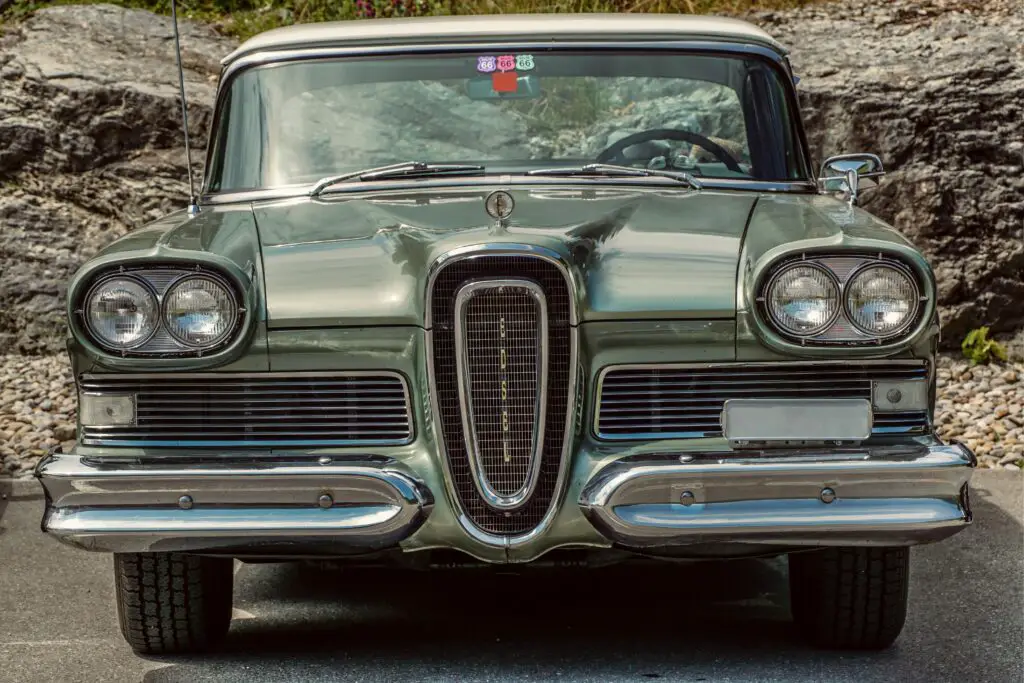
Ford’s Edsel in the late 1950s introduced a push-button transmission called Teletouch that sounded futuristic. The buttons were located in the center of the steering wheel, an unusual design meant to free up space. But the system was notoriously unreliable, and many drivers accidentally hit the wrong gear while steering. Service costs skyrocketed, and the feature quickly became a headache instead of a selling point.
Drivers complained that the buttons sometimes froze or failed entirely, leaving them stranded. The placement also made it dangerously easy to shift into reverse or drive unintentionally. This ambitious tech experiment turned into one of the most infamous automotive regrets in American history. Ford quietly abandoned it after just a year or two.
5. Chevrolet’s Corvair Air-Cooled Rear Engine
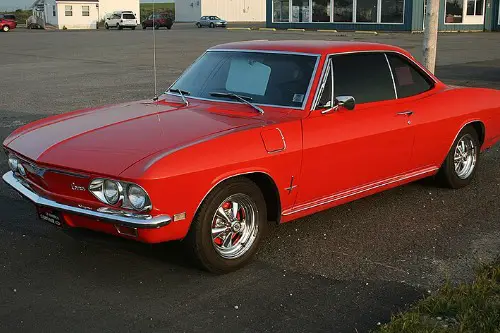
The Chevrolet Corvair, produced in the 1960s, featured an air-cooled, rear-mounted engine—something more common in European cars at the time. While innovative, it caused handling issues that made the car prone to oversteering, especially in sharp turns. Consumer advocates raised alarms, and the car gained a reputation for being unsafe. For many, the engineering novelty was overshadowed by a lack of stability.
The design also complicated repairs, as the rear engine layout wasn’t familiar to most American mechanics. Cooling problems and suspension quirks only added to maintenance woes. Despite being hailed as futuristic, the Corvair quickly earned a spot on “regretted inventions” lists. The controversy hurt Chevrolet’s reputation for years.
6. Cadillac’s Northstar V8 with Oil Sludge Issues
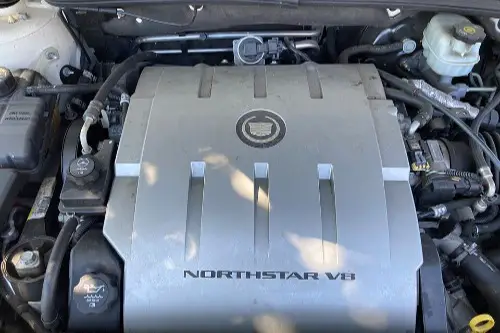
Cadillac’s Northstar V8, introduced in the 1990s, promised smooth, high-performance luxury driving. Unfortunately, some engines suffered from severe oil sludge buildup if owners didn’t adhere to strict maintenance schedules. This led to costly repairs and, in some cases, complete engine failure. The engine’s advanced design couldn’t make up for the practical headaches it caused everyday drivers.
Customers were frustrated to discover that “premium” didn’t mean “trouble-free.” Cadillac had to extend warranties and perform recalls to keep buyers somewhat happy. While innovative in theory, the engine was a cautionary tale about overengineering. It demonstrated that even luxury tech could backfire if not carefully tested.
7. GM’s Touch-Control Radio

In the 1980s, GM introduced a touch-control radio, replacing traditional knobs with a touch-sensitive interface. Drivers quickly realized that sunlight glare, finger smudges, and cold fingers made the system nearly unusable. Changing stations or adjusting volume became an exercise in frustration. What was meant to be high-tech convenience turned into a distraction behind the wheel.
People longed for the simple tactile feedback of knobs and buttons. Many early adopters ignored the touch controls entirely or reverted to aftermarket radios. The innovation was flashy but impractical, making it a short-lived feature in mainstream cars. It taught carmakers that usability matters more than novelty.
8. Pontiac Aztek’s Split-Level Dashboard

The Pontiac Aztek, infamous for its polarizing design in the early 2000s, also introduced a split-level dashboard. The idea was to give the driver more storage and organization options. In practice, the layout confused users and made the interior feel cluttered. Many drivers didn’t know where essential controls were, leading to repeated mistakes while driving.
The style was meant to be adventurous but ended up feeling chaotic. The dashboard was criticized for looking more like a futuristic spaceship than a practical car interior. Owners often regretted the design choices when using the car daily. It became a textbook example of form over function.
9. Ford Pinto’s Fuel Tank Placement

The Ford Pinto of the 1970s became notorious for its rear-mounted fuel tank that could rupture in rear-end collisions. Safety tests revealed that even minor impacts could ignite fires, making it a widely discussed automotive disaster. While intended to maximize interior space, the design prioritized convenience over driver safety. The result was a feature that immediately earned widespread regret.
The controversy led to lawsuits, recalls, and a permanent black mark on Ford’s reputation. Owners faced understandable anxiety whenever they drove behind other vehicles. The Pinto’s fuel tank placement became a cautionary tale about ignoring basic safety principles. It’s one of the most famous “innovation gone wrong” stories in American automotive history.
10. Chrysler’s “Can-See” Headlights
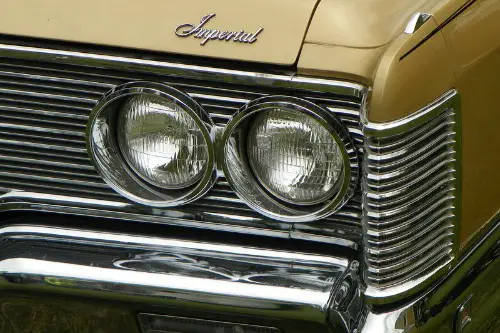
In the 1970s, Chrysler experimented with pop-up headlights called “Can-See” that were intended to improve aerodynamics. They looked cool when retracted but were mechanically complex and prone to failure. Drivers often found themselves with stuck headlights or expensive repairs to fix the mechanism. The novelty factor couldn’t compensate for the maintenance headaches.
The system was especially problematic in cold weather, where ice could jam the lights closed. For everyday driving, reliability clearly mattered more than style. While iconic in appearance, the headlights became a symbol of impractical innovation. Car enthusiasts remembered them more for inconvenience than charm.
11. Ford Mustang’s “Shaker” Hood
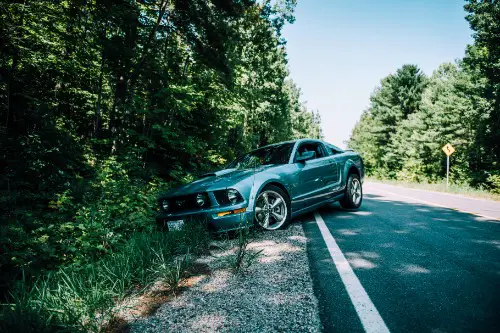
The Shaker hood, introduced in the 1960s Mustang, featured a scoop mounted on the engine that protruded through the hood and shook with engine vibrations. While visually striking, the constant shaking could make the hood rattle and required regular maintenance. Over time, the hood scoop sometimes interfered with visibility and created unexpected wind noise. Drivers quickly realized that the “cool factor” came at a tangible cost.
Mechanics also warned that improper installation or wear could damage the engine or hood. The feature became iconic, but only for those willing to accept minor annoyances. Many first-time buyers regretted the extra upkeep when their excitement wore off. It’s an example of style triumphing over practicality.
12. GM’s Oldsmobile Quad 4 Engine
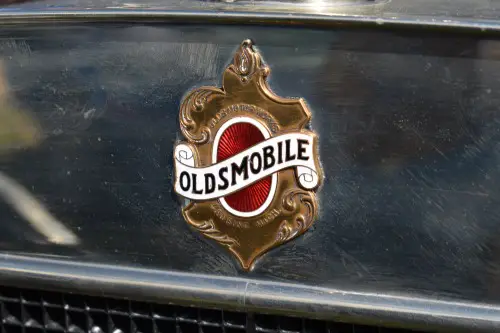
The Oldsmobile Quad 4 engine of the late 1980s was marketed as a high-tech, fuel-efficient four-cylinder marvel. Unfortunately, it gained a reputation for being noisy, vibration-heavy, and prone to premature wear. Drivers expected refinement but got something more reminiscent of a clattering toolbox on wheels. The ambitious engineering promised performance but failed to deliver long-term reliability.
Frequent maintenance and oil changes were necessary to keep it running smoothly. Many owners found themselves regretting the decision as repair bills mounted. While it pushed innovation boundaries, the Quad 4 became a cautionary tale about overpromising and underdelivering. It’s remembered more for frustration than for fun.
This post 12 Car Features That Were Invented in America and Immediately Regretted was first published on American Charm.


